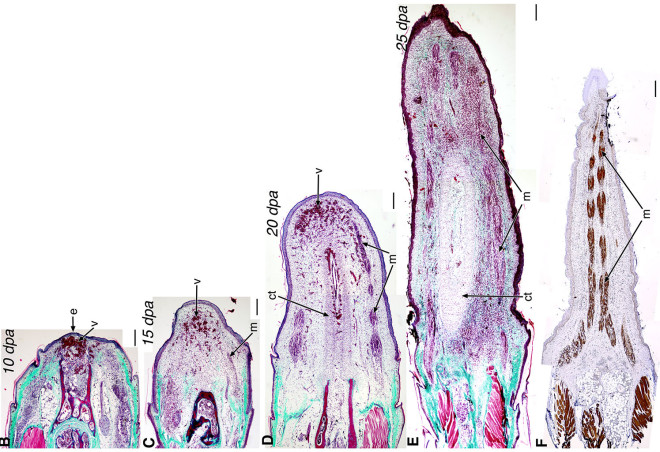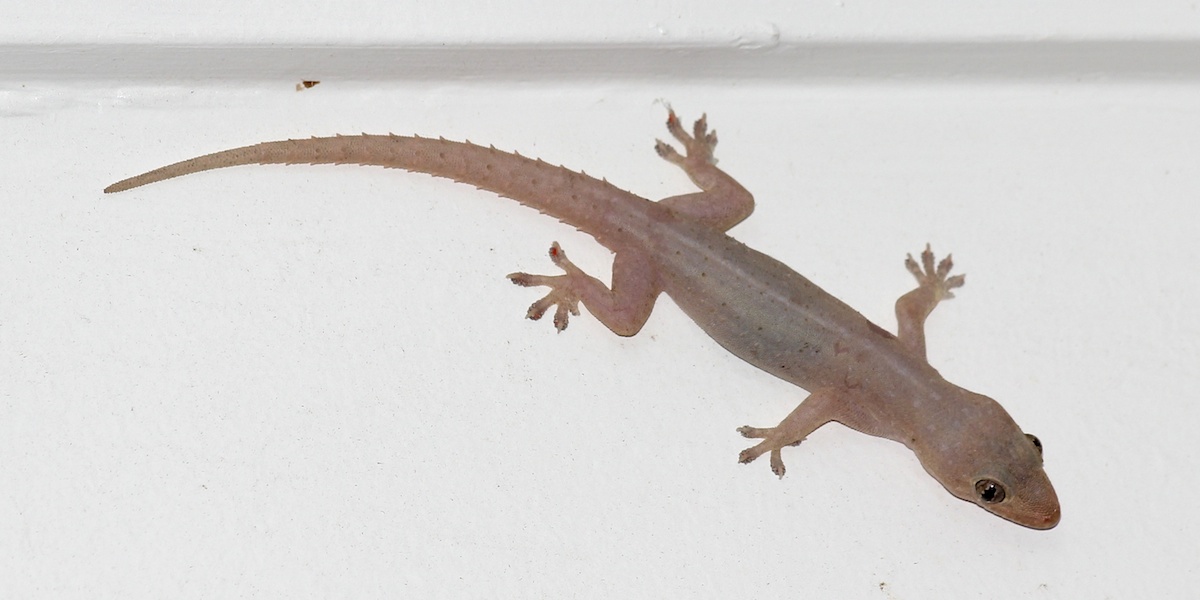It looks like you're using an Ad Blocker.
Please white-list or disable AboveTopSecret.com in your ad-blocking tool.
Thank you.
Some features of ATS will be disabled while you continue to use an ad-blocker.
share:
It has a few days but i haven't seen it posted, if it was please delete.

Scientists Have Figured Out How Lizards Regrow Their Tails, And That's Good News For Humans
PLOSONE
Soon..
One day missing limbs will be a thing of the past, of course messing with our genetics will gives us another problems like excess limbs but progress is a good news always.
Also, does that means in the near future we all gonna be reptilians???

When a lizard loses its tail, it grows back. But how?
Scientists have taken a big step closer to answering that question by pinpointing the genes responsible for tail regeneration. And the finding may yield important clues about how to regenerate limbs in humans.
For the study, the researchers took a close look at roughly 23,000 genes found in samples of sliced-up tails of green anole lizards. They found that at least 326 genes in specific spots along each tail were "turned on" during regeneration -- suggesting that lizard DNA has a genetic "recipe" for regeneration.
What about human limb regeneration? The researchers said their finding may help pave the way for new therapeutic approaches for birth defects and spinal cord injuries -- and possibly arthritis too. Nearly all of the 326 genes pinpointed by the researchers are present in humans as well as lizards, Kusumi said.
Scientists Have Figured Out How Lizards Regrow Their Tails, And That's Good News For Humans
PLOSONE
Lizards, which are amniote vertebrates like humans, are able to lose and regenerate a functional tail. Understanding the molecular basis of this process would advance regenerative approaches in amniotes, including humans. We have carried out the first transcriptomic analysis of tail regeneration in a lizard, the green anole Anolis carolinensis, which revealed 326 differentially expressed genes activating multiple developmental and repair mechanisms. Specifically, genes involved in wound response, hormonal regulation, musculoskeletal development, and the Wnt and MAPK/FGF pathways were differentially expressed along the regenerating tail axis. Furthermore, we identified 2 microRNA precursor families, 22 unclassified non-coding RNAs, and 3 novel protein-coding genes significantly enriched in the regenerating tail. However, high levels of progenitor/stem cell markers were not observed in any region of the regenerating tail. Furthermore, we observed multiple tissue-type specific clusters of proliferating cells along the regenerating tail, not localized to the tail tip. These findings predict a different mechanism of regeneration in the lizard than the blastema model described in the salamander and the zebrafish, which are anamniote vertebrates. Thus, lizard tail regrowth involves the activation of conserved developmental and wound response pathways, which are potential targets for regenerative medical therapies.
Soon..
One day missing limbs will be a thing of the past, of course messing with our genetics will gives us another problems like excess limbs but progress is a good news always.
Also, does that means in the near future we all gonna be reptilians???
edit on 27-8-2014 by Indigent because: (no reason given)
Great...once something like this is introduced in to the human gene pool, we will have morons cutting of certain "limbs" hoping it will grow back
"bigger and better".
This is great news, but just wonder if this might lead to something we've seen only in movies, like Total Recall.
If this happens and we can trigger genes to regenerate lost or missing limbs, that might have some impact on prosthetic arms/legs industry...
If this happens and we can trigger genes to regenerate lost or missing limbs, that might have some impact on prosthetic arms/legs industry...
a reply to: Indigent
Growing up I used to live on a tropical island and was always intrigued to see Geckos lose and regenerate their tails - they tend to hang around in the one area of the house for a while and you could watch over a period of a few weeks it happening right before your eyes.
Cool if they could nail this tech for limb and even organ regeneration.
But mate, Lizards.......and humans.......blending (however remotely)............on ATS.........
You ready for this?
Growing up I used to live on a tropical island and was always intrigued to see Geckos lose and regenerate their tails - they tend to hang around in the one area of the house for a while and you could watch over a period of a few weeks it happening right before your eyes.

Cool if they could nail this tech for limb and even organ regeneration.
But mate, Lizards.......and humans.......blending (however remotely)............on ATS.........
You ready for this?
edit on 27-8-2014 by Sublimecraft because: Asian House Gecko, Hemidactylus frenatus, aka Pacific house gecko.
a reply to: SLAYER69
Am I the only one thinking of Curt Connors / The Lizard? Didn't we learn anything from Spider-man?

We already splice DNA into bacteria (to make insulin etc.) Guess it was only a matter of time before we tried utilizing genes from other animals in this way.
It always sounds ugly until you're the one wishing you had your legs back.
Am I the only one thinking of Curt Connors / The Lizard? Didn't we learn anything from Spider-man?

We already splice DNA into bacteria (to make insulin etc.) Guess it was only a matter of time before we tried utilizing genes from other animals in this way.
It always sounds ugly until you're the one wishing you had your legs back.
edit on 27-8-2014 by NarcolepticBuddha because: (no reason given)
Regeneration is the future, everything will be regenerated, not just limbs, but whole body's will be regenerated, from a single cell ! The body's of
everyone that ever lived will be regenerated, some to everlasting life, some to everlasting condemnation. Hallelujah, Amen !
Limb regeneration has already been done in humans but only as far as part of a finger and some leg muscle tissue.
This could be groung breaking!
But if this only permits the lizards to grow their tail back, if they lose a leg, will it grow back also? I say this because humans don't have tails, well at least most humans don't.
They may have to tweek this a little for it to suit OUR needs in arms and legs regeneration. They could be really close though, who knows?
But if this only permits the lizards to grow their tail back, if they lose a leg, will it grow back also? I say this because humans don't have tails, well at least most humans don't.
They may have to tweek this a little for it to suit OUR needs in arms and legs regeneration. They could be really close though, who knows?
Nearly all of the 326 genes pinpointed by the researchers are present in humans as well as lizards, Kusumi said.
wow, so we need to figure out which of the genes we are missing and then figure out how to turn all 326 genes on and off.
originally posted by: NarcolepticBuddha
a reply to: SLAYER69
Am I the only one thinking of Curt Connors / The Lizard? Didn't we learn anything from Spider-man?
We already splice DNA into bacteria (to make insulin etc.) Guess it was only a matter of time before we tried utilizing genes from other animals in this way.
It always sounds ugly until you're the one wishing you had your legs back.
We won't need to splice genes from other critters. Previous studies have shown that there is a cascade effect of gene activity in order to construct a body. If you can activate one ancestor gene, then that kickstarts everything else. Usually it starts with a limb bud, or a tooth bud, and then everything grows from there on. Growing small body parts like fingers and teeth should be easy and take just a few months. But a whole leg or arm could take years.
I remember the first time i picked a Lizard up by the tail...I nearly pat my shants.
Having read the article, and given this some thought the following can be stated:
This very well could be a miracle cure that could have uses that may be a blessing. The applications could do things for the species, that may end up being a life changing.
Think about it, a person loses a limb or is born with a birth defect and can regrow a new health limb. Organs that fail could be regrown and remove rejection of transplanting. Some of the diseases of things like heart disease could be something of the past. This could be the start of where average age of people cease to be set and go far longer.
But as with every potential medical miracle, also lies the possibility of a nightmare, Do we now have people who are able to live past their natural lives, like prisoners only to get out and do far worse things? Or where it goes terribly wrong and a person ends up living in pain and agony or far worse, it kills the person. It has to be done carefully with all of the ramifications fully explored.
This very well could be a miracle cure that could have uses that may be a blessing. The applications could do things for the species, that may end up being a life changing.
Think about it, a person loses a limb or is born with a birth defect and can regrow a new health limb. Organs that fail could be regrown and remove rejection of transplanting. Some of the diseases of things like heart disease could be something of the past. This could be the start of where average age of people cease to be set and go far longer.
But as with every potential medical miracle, also lies the possibility of a nightmare, Do we now have people who are able to live past their natural lives, like prisoners only to get out and do far worse things? Or where it goes terribly wrong and a person ends up living in pain and agony or far worse, it kills the person. It has to be done carefully with all of the ramifications fully explored.
If you were to combine this, with stem cell and nano technology, we really could see "Wolverine" like regeneration someday. Imagine, people could
live hundreds of years as long as they supplied their bodies with the proper nutrients and had specialized nanobots and stem cell treatments. Things
inside your body could be repaired before you were even aware there was a problem.
a reply to: MystikMushroom
Why should they made it a preventive treatment went they can make it a long and expensive treatment, do you want to regrow your finger? Now you can with only 300 dose of the $1k miracle drug...
Why should they made it a preventive treatment went they can make it a long and expensive treatment, do you want to regrow your finger? Now you can with only 300 dose of the $1k miracle drug...
Time for the west to cough up all the classified technology that they worked on during the past 10-15 years, including and especially advanced
prosthetics and regenerative medicine or they will pay for disabled people from Afghan and Iraq war with their own money.
The claimed number of heavy injuries sustained by western military forces in Iraq and Afghanistan are completely cooked up and the real numbers of casualties are 80% or more hidden by the degenerate media apparatus running western countries.
The claim that the US only lost about 7000 in the war on terror is a complete bollock.
Same is the Italian claim of having lost about 450 soldiers in 15 years of war. Ridiculous.
A more accurate assessment would put US losses at 80.000 dead and 400.000 serious injuries.
For Italy that could easily be 10.000 dead 50.000 serious injuries.
The EU has no hope, the war on terror launched by the west is a hopeless bollock that will have to come to an end very soon, or the west itself will end.
The claimed number of heavy injuries sustained by western military forces in Iraq and Afghanistan are completely cooked up and the real numbers of casualties are 80% or more hidden by the degenerate media apparatus running western countries.
The claim that the US only lost about 7000 in the war on terror is a complete bollock.
Same is the Italian claim of having lost about 450 soldiers in 15 years of war. Ridiculous.
A more accurate assessment would put US losses at 80.000 dead and 400.000 serious injuries.
For Italy that could easily be 10.000 dead 50.000 serious injuries.
The EU has no hope, the war on terror launched by the west is a hopeless bollock that will have to come to an end very soon, or the west itself will end.
new topics
-
Happy Thanksgiving to ATS
General Chit Chat: 2 hours ago -
Simple Thanksgiving
Food and Cooking: 9 hours ago
top topics
-
V.P. Kamala Harris releases a video and nobody understands why
US Political Madness: 17 hours ago, 16 flags -
Mind Blowing Cave under someones land
Fragile Earth: 13 hours ago, 16 flags -
The Party of Peace - Trump Cabinet Picks Targeted with Death Threats
US Political Madness: 14 hours ago, 15 flags -
Trump could make a peaceful American Revolution
US Political Madness: 12 hours ago, 14 flags -
Simple Thanksgiving
Food and Cooking: 9 hours ago, 14 flags -
Trump Presidential Transition Team will not use GSA or Government entities to come to DC
US Political Madness: 12 hours ago, 13 flags -
Happy Thanksgiving to ATS
General Chit Chat: 2 hours ago, 5 flags
active topics
-
Trump Presidential Transition Team will not use GSA or Government entities to come to DC
US Political Madness • 13 • : angelchemuel -
Petition Calling for General Election at 564,016 and rising Fast
Political Issues • 106 • : angelchemuel -
Happy Thanksgiving to ATS
General Chit Chat • 3 • : IceHappy -
Simple Thanksgiving
Food and Cooking • 27 • : Owlwatcher -
Mind Blowing Cave under someones land
Fragile Earth • 17 • : Owlwatcher -
The Party of Peace - Trump Cabinet Picks Targeted with Death Threats
US Political Madness • 27 • : DBCowboy -
President-Elect DONALD TRUMP's 2nd-Term Administration Takes Shape.
Political Ideology • 256 • : WeMustCare -
-@TH3WH17ERABB17- -Q- ---TIME TO SHOW THE WORLD--- -Part- --44--
Dissecting Disinformation • 3389 • : Crazierfox -
I thought Trump was the existential threat?
World War Three • 113 • : WeMustCare -
Mood Music Part VI
Music • 3719 • : MRTrismegistus
